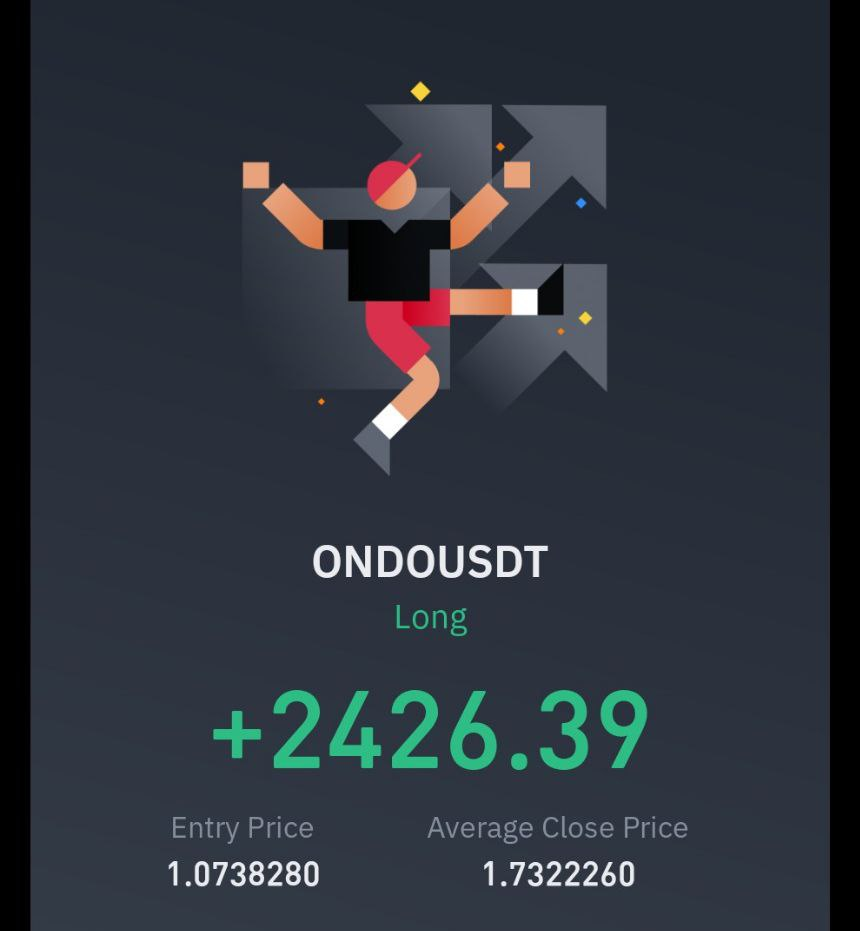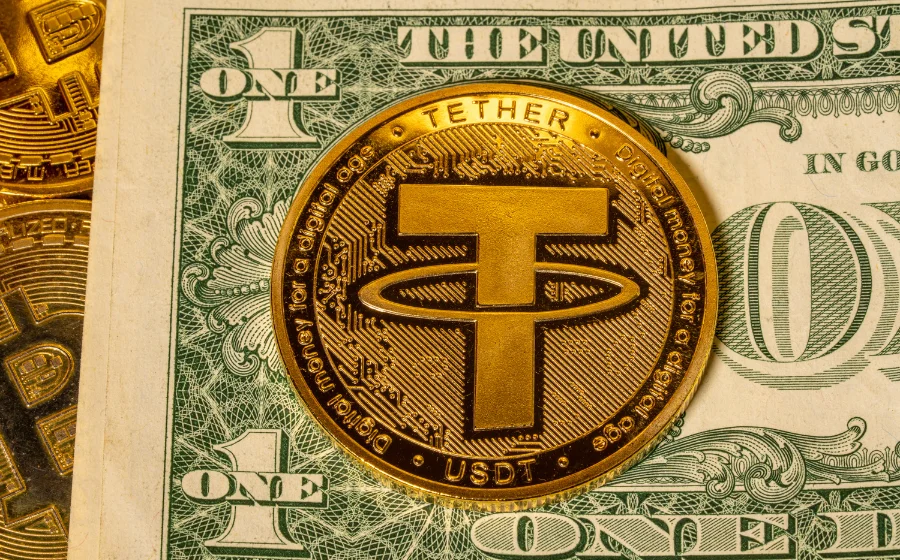
KEYTAKEAWAYS
- Perpetual contract is a flexible crypto trading tool allowing traders to go long or short without expiration, amplifying both profits and risks.
- Funding rates maintain balance between long and short positions in perpetual contracts, preventing price deviations from spot markets.
- Traders can use perpetual contracts for hedging, arbitrage, or leveraging strategies, offering diverse opportunities in volatile markets.

CONTENT
Perpetual contract is a type of derivative that allows traders to go long, short, or hedge using leverage without expiration dates. Learn its features, risks, and strategies in crypto trading.
WHAT IS A PERPETUAL CONTRACT?
In the crypto community, it’s common to come across screenshots showcasing high investment returns from contract trading.
These impressive profits are often achieved through leveraging—a method to amplify returns.
Perpetual contracts are one such type of leveraged trading instrument.

By definition, a Perpetual Contract (also referred to as Perpetual Futures, Perpetual Contracts, or Perpetual Swaps) is a type of derivative trading tool.
With perpetual contracts, traders can go long (betting on price increases), short (betting on price decreases), or perform arbitrage strategies, potentially earning returns that far exceed their initial investment.
Unlike traditional futures contracts, perpetual contracts do not have a set expiration or settlement date.
This means traders can hold their positions indefinitely without needing to physically or financially settle the contract on a specific date.
Instead, they can buy and sell based on price fluctuations at any time, offering significant flexibility for opening and closing positions.
>>> More to read: What is Crypto Futures Trading? Maximize Your Crypto Gains
HOW PERPETUAL CONTRACTS WORK
The underlying principle of perpetual contracts is simple: they allow investors to borrow fiat or cryptocurrency to buy or sell digital assets at a specific price in the future.
Here’s how it works, explained step by step:
1. Initial Investment:
✎ Coinrank has 100 USDT and predicts that Bitcoin’s price will rise from 100 to 200 tomorrow.
2. Borrowing Funds:
✎ Coinrank borrows 900 USDT from the exchange.
✎ This gives a total of 1,000 USDT for trading.
3. Buying Bitcoin:
✎ With the 1,000 USDT, Coinrank buys 10 BTC at the price of 100 each.
4. Selling Bitcoin at a Higher Price:
✎ The next day, Bitcoin’s price increases to 200.
✎ Coinrank sells the 10 BTC for 2,000 USDT.
5. Repaying Borrowed Funds:
✎ Coinrank repays the borrowed 900 USDT to the exchange.
✎ Remaining balance: 1,000 USDT.
6. Profit Calculation:
✎ Total profit from this perpetual contract trade: 1,000 USDT.
ꚰ Benefits and Risks of Using Leverage in Perpetual Contracts
-
Amplified Gains:
If Coinrank had only used the initial 100 USDT, the profit would have been just 100 USDT. With 10x leverage in the perpetual contract, the profit soared to 1,000 USDT.
-
Magnified Losses:
If Bitcoin’s price had dropped to 50, the 10 BTC would only be worth 500 USDT. After repaying the 900 USDT, Coinrank would face a nominal loss of 500 USDT.
Using perpetual contracts allows traders to maximize potential gains through leverage, but it’s crucial to manage risks as losses can also be significantly magnified.
ꚰ Liquidation Risk
Liquidation occurs when the losses on a position reach a level where the margin is no longer sufficient to maintain the position.
In such cases, the exchange automatically closes the position to protect both the platform and other traders.
Key Features of Liquidation Risk:
-
Amplified Risk with High Leverage:
The higher the leverage used, the greater the likelihood of liquidation due to amplified price fluctuations.
-
Highly Volatile Markets:
Crypto markets are significantly more volatile than traditional assets, making liquidation a frequent occurrence.
-
Automatic System Intervention:
Once the margin falls below the maintenance requirement, the exchange will forcibly liquidate the position, regardless of whether a market rebound is imminent.
>>> More to read: How to Get Crypto Passive Income Easily?
PERPETUAL CONTRACTS | FUNDING RATE
In perpetual contract trading, the concept of funding rates arises from the borrowing nature of the trade.
Borrowing incurs an interest rate, creating a mechanism to balance the market. Here’s how it works:
➤ How Funding Rates Work:
Example with ETH:
If there are more traders shorting ETH (betting on its price decreasing) than going long, this means most traders are borrowing ETH.
In this case, short traders must pay interest to long traders, resulting in a negative funding rate.
Conversely, if there are more long traders than short, the long traders pay interest to short traders, resulting in a positive funding rate.
➤ Purpose of Funding Rates:
The funding rate (Funding Fee) prevents extreme market imbalances between long and short positions.
Without this mechanism, the perpetual contract price could deviate significantly from the spot price.
By imposing funding fees, the market adjusts the cost of opening positions for the dominant side, maintaining price stability and mitigating the risk of extreme scenarios.
➤ Key Points about Funding Rates:
-
Charged Every 8 Hours:
Funding rates are typically charged every 8 hours on major exchanges. The countdown timer on a perpetual contract trading page indicates the time remaining until the next funding rate is applied.
-
Avoiding Funding Fees:
Traders who open and close their positions between two funding rate timestamps do not incur funding fees.
Understanding the role and timing of funding rates in perpetual contracts is crucial for managing trading costs and strategies.
By carefully timing trades, you can potentially avoid paying these fees while taking advantage of market movements.
>>> More to read: How to Start Trading in Crypto: A Beginner’s Guide
HOW TO PLAY WITH PERPETUAL CONTRACTS
1. Long / Short Positions
- Going Long: Betting on the price increase of an asset by buying contracts.
- Going Short: Predicting a price decrease by selling contracts.
This mechanism allows traders to profit not only from rising prices but also from falling prices.
2. Leverage Trading
In perpetual contracts, traders can use leverage to borrow funds beyond their initial margin, enabling them to amplify potential returns.
However, leverage also significantly increases the risk of losses.
3. Hedging with Perpetual Contracts
If a trader holds spot cryptocurrency and is concerned about price depreciation, they can open a 1x short position as a hedge.
This helps maintain the value of their holdings, especially when it’s inconvenient to sell the assets outright.
4. Arbitrage Between Spot and Perpetual Contracts
When the funding rate for a perpetual contract of a specific cryptocurrency is positive, traders can execute an arbitrage strategy:
- Hold the cryptocurrency in spot markets.
-
Simultaneously open a short position in the perpetual contract.
This way, they earn the funding rate paid by long positions to short positions. This strategy requires precise calculations and careful execution.
5. Copy Trading
Experienced perpetual contract traders can enable copy trading, allowing others to follow their trades. The original trader can earn a share of the profits generated by their followers.
ꚰ Conclusion
Perpetual contracts offer diverse strategies for both beginners and seasoned traders.
Whether through leveraged trading, hedging, or arbitrage, understanding these methods is key to maximizing potential returns while managing risks effectively.
>>> More to read: What Are Leveraged Tokens? A Beginner’s Guide


















